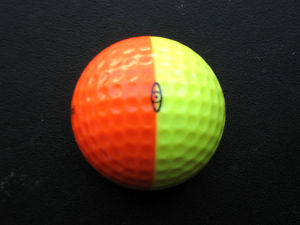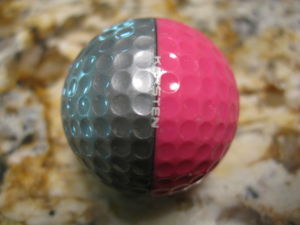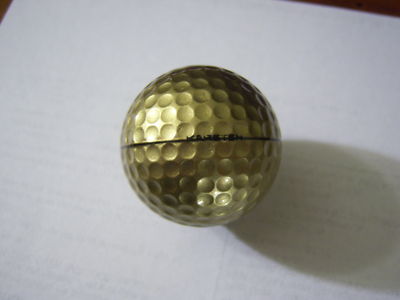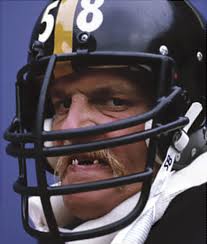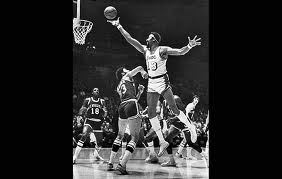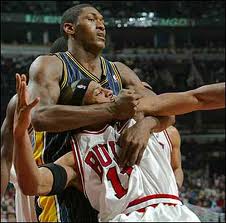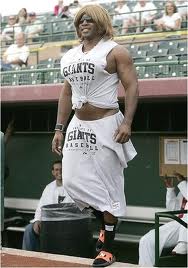Not sure if this is the right forum so feel free to move it.
A friend of mine sent me this and I didn’t know if anyone here had seen it. I think it’s an interesting proposal but I’m not sure that it doesn’t make the situation worse. But at least there is someone willing to make some kind of suggestion for keeping the great golf courses in play.
PHOENIX (December 19, 2011) – John Solheim, Chairman & CEO of PING, is proposing that golf’s rule making bodies consider a “Ball Distance Rating” system (BDR) that would replace today’s single golf ball limit with three different ball distance limits – one that is the same as today’s standard, one that is shorter and one that is longer. Solheim’s “A Long Term Response to Distance” explains how including a BDR system with a new “Condition of Competition” would give professional events and golf courses an efficient way to address future concerns about distance.
“A BDR Condition of Competition would create a simpler way to control distance at the tour level – and keep the competitive design of the world’s great courses in play,” said Solheim. “This concept addresses the unique talents of the top 0.1% of the world’s golfers without hurting the other 99.9%.” Solheim also noted that a key aspect of the idea is to give players who would benefit from it the option of using a longer ball, a choice many golfers may appreciate, especially when taking on today’s longer courses. “The distance rating of the ball used would factor into handicaps, just like slope rating or choice of tee box does today.”
Solheim recently sent his BDR idea to golf’s governing bodies, and suggested it could be a positive factor in helping to sustain and grow the game. “I appreciate the challenges faced by those who help govern the game,” said Solheim. “I am hopeful they give my idea further consideration and use it as a starting point to address some of the issues the game is facing. The positive impact golf has on so many groups requires that we explore a variety of ideas to improve the health of the sport. I hope others have suggestions to offer as well.”
John Solheim’s “Long Term Response to Distance” follows:
A Long Term Response to Distance
For as long as I can remember, golf has been challenged by concerns over driving distance. Unfortunately, over the past dozen or so years, many actions taken in response to that challenge have often been short sighted, costly and/or controversial – such as altering some of golf’s most revered courses and adopting restrictive golf club rules. Now, we learn average driving distance on the PGA Tour just had another increase – it broke through 290 yards for the first time (and with so many dynamic young golfers working toward a Tour card, who knows where it will go from here). So, once again we are hearing the question: “what, if anything, should be done about it?”
With so many other challenges facing the game, we need to be sure any “distance discussions” focus on the long term – on solutions that can quickly and easily respond to future increases in distance (no matter the cause); on ideas that give professional events and courses a tool that allows each to best address the distance concerns unique to their venue; on proposals that recognize it is far simpler to adjust the ball to the course, than to adjust the course to the ball. Finally, we need a response that will resolve this issue once and for all. To get this discussion rolling, here is how I think we can do just that:
-
Replace today’s single golf ball distance limit with three different “Ball Distance Ratings” (or “BDRs”) – one that is the same as today’s limit, one that is shorter and one that is longer.
-
Adopt a “BDR Condition of Competition” – each event could apply the BDR appropriate for its course design and yardage, and for the skill level of the golfers competing at the event.
-
Include BDR as a factor in calculating handicaps – just as “slope rating” or choice of tee box does today, the BDR of the ball you use will factor into your handicap.
BDR golf balls should have similar flight characteristics as today’s ball (trajectory, spin rates, etc) with the only variable being distance. Some details may be challenging, but I have no doubt the USGA and the R&A are up to the task. With distance as the only variable, an example of what could be done would be to adopt a color code for the several BDRs (just like we do with tee boxes), perhaps using “gold, silver and bronze”. A “silver dot” rating could apply to balls that conform to the current distance limits, a “gold dot” rating to balls that are longer (perhaps 30 yards longer), and a “bronze dot” rating for balls that are shorter than today’s ball limit (again, maybe 30 yards shorter). More BDR levels could be added, if needed, to address future increases in driving distance by Tour professionals.
If the game adopted a “BDR Condition of Competition”, I believe the vast majority of events would choose to allow the same balls (and ball limit) used today. Most courses hosting professional tour events were built with, or have added, sufficient length to challenge the world’s best golfers. Perhaps a small number of tournaments, those played at some of the game’s classic courses, would find it exciting to put the original design elements of the layout back in play by requiring shorter rated golf balls. These events may even generate a lot of interest, and TV viewers. A key point of this idea is that it puts control over those decisions with the event itself. It also gives each venue a new “long term” option for responding to future increases in driving distance – bring in the bull dozers, or simply adopt a new BDR.
I recognize asking tour professionals to occasionally switch to a different rated ball creates a new challenge. However, rising above golf’s toughest obstacles is what they do best. These skilled athletes likely realize that imposing equipment limits on tens of millions of amateurs – a group that is critical to golf’s future – is not the best way to resolve issues unique to competitions played at the highest levels. I think the most talented professional golfers in the world would be willing to switch to a shorter ball once in awhile, if that would benefit the remaining 99.9% of us.
Giving amateurs the option of playing a new, longer rated, ball is another key aspect of this idea. Many golfers find it very difficult to play today’s longer courses. Using a longer ball should make that experience more enjoyable. It may even bring some ex-golfers back to the course. Perhaps this idea could even reduce the time needed to complete some rounds, a goal shared by everyone.
There will likely be occasions when amateurs tee it up with a shorter rated ball. Some golfers may choose to do so when playing some classic courses, ones that cannot add yardage, in order to bring out the competitiveness of the original design. Others may choose to do so because it has a positive impact on their handicap. Some courses might even recommend using a shorter rated ball. Higher handicap players may find it easier to play alongside more experienced golfers – from the same tees – when using different rated balls. Each of these choices gives some control over the distance issue where it is needed most – with the golfer and the course.
This proposal could also help the USGA and the R&A. The handicap system may benefit from adding “ball rating” as a factor. This solution is also consistent with the Joint Statement of Principles announced by the USGA and R&A in 2002: it provides an immediate and an efficient way to address future increases in distance, and it is not bifurcation – amateurs and professionals will still play to a ball limit, just not necessarily the same one on the same course. Adopting a few new ball distance ratings is basically the same as adding a few more tee boxes – and adding tee boxes is not bifurcation.
In order to fully evaluate this idea, the constructive input of golf ball manufacturers will be needed (PING currently does not sell or manufacture golf balls, but we did for over 20 years). I realize this suggestion presents challenges, but a BDR system brings with it new opportunities as well. Adding new categories of “conforming” golf balls should lead to exciting new ways for golf ball companies to competitively innovate, and it could increase golf ball sales. If it were as simple to develop a club rating system that included a similar opportunity to innovate longer drivers, I know I would welcome it. However, if golf once again chooses to address driving distance, it needs a practical long term solution, and I believe a BDR system would do the job.
All of us, including those in the manufacturing community, have a responsibility to offer new ideas and appropriately work with the rule making bodies to help improve the game It can be done, as demonstrated by the positive results from the November 2010 Vancouver forum, and the solution PING provided in resolving the Eye2 controversy on the PGA Tour in early 2010. I will continue to do what I can, and I believe others will as well. The game has seen many positive changes over its long history, changes that appropriately recognize the relationship between the challenge and the enjoyment of the game at all skill levels. I believe a BDR system would provide a way to continue do just that – for a long time to come.
John A. Solheim
Chairman and CEO of PING
here is the original link: flagstick.com/equipment/?p=74
